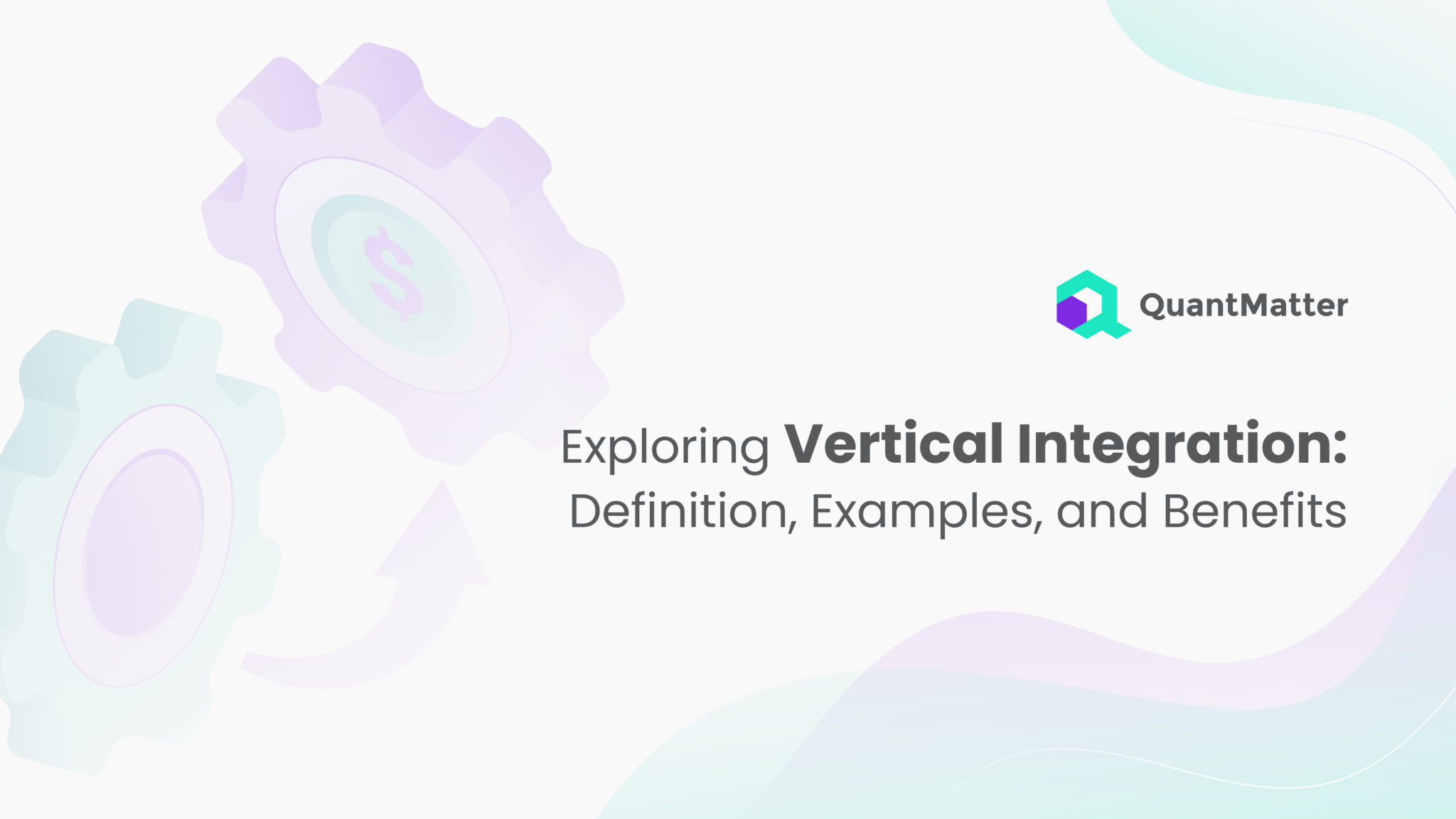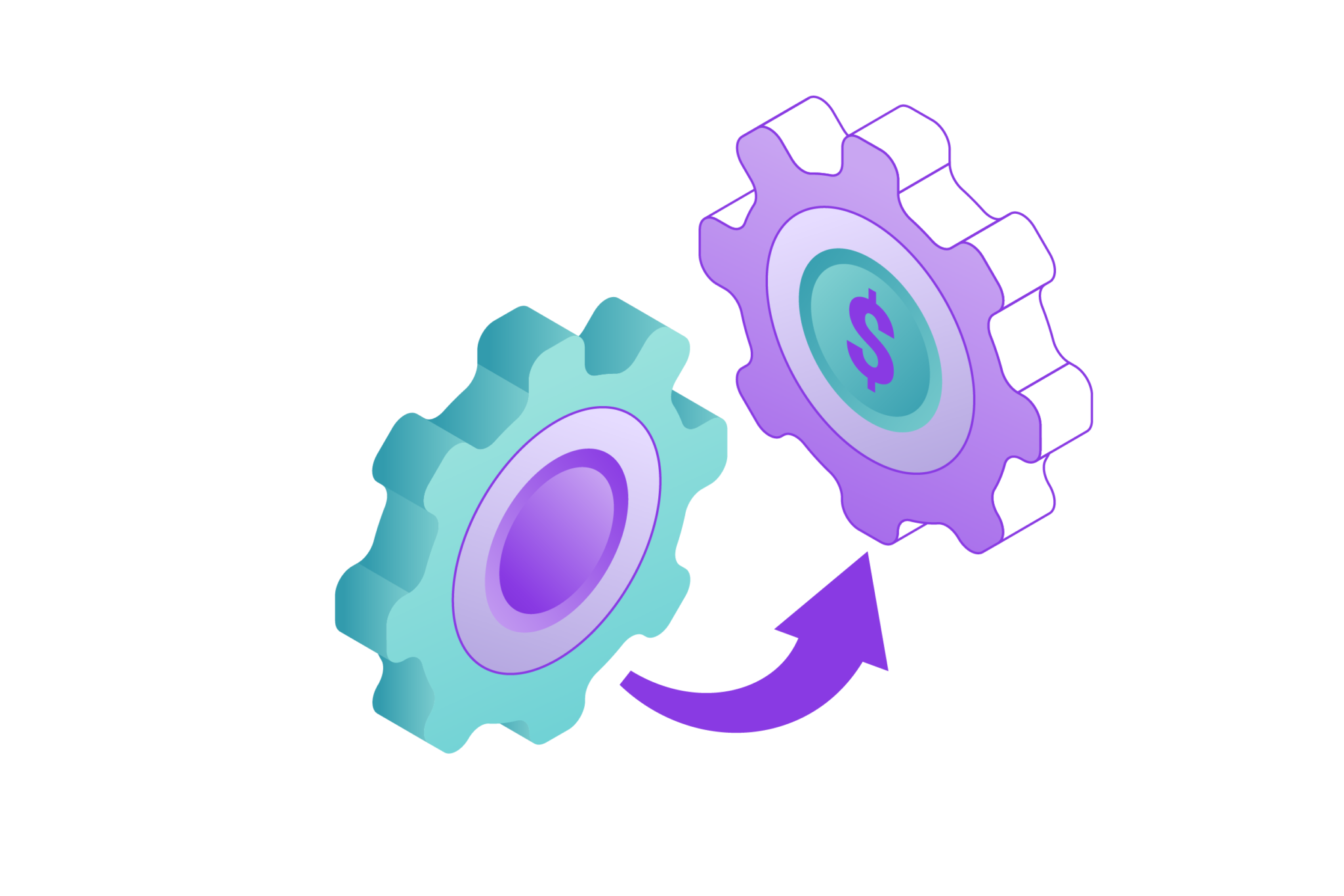
Businesses today are always on the lookout for ways to get ahead of the competition and make their operations more efficient. Vertical integration is a strategy that has become more popular for achieving these goals. Simply put, it’s when a company decides to take over different parts of its production or supply chain. This approach is aimed at cutting down expenses and gaining more control over the materials and products involved in their business, from the beginning to the end.
By taking control of more steps in the production and supply process, a company can ensure that everything runs more smoothly. This means they can produce their goods more efficiently, without relying too much on outside suppliers. It helps in avoiding delays and reduces the cost of buying materials from other companies.
Overall, vertical integration is about a company’s effort to handle more of its business operations internally. This can lead to better coordination, reduced costs, and a stronger position in the market. It’s a strategy that requires careful planning and investment but can significantly benefit those who implement it effectively.
What is Vertical Integration?

Vertical integration represents a strategic approach by which a company extends its operations across different stages within the same production pathway. This strategy can manifest in two primary forms:
Forward Integration
Forward integration represents a strategic business move where a company extends its operations and control further down the production line, closer to the point of final product sale. This expansion often involves the acquisition of or establishment of new ventures in distribution centers, retail outlets, or even direct consumer sales platforms. The primary objective behind such a maneuver is to bridge the gap between the production of goods and the end consumers.
By doing so, a company can significantly enhance its direct sales capabilities, ensuring a more streamlined process from production to consumer sales. This approach not only allows for a better control over the distribution and retailing processes but also offers an opportunity to directly interact with the final consumers. It enables the company to gather valuable feedback, adjust its marketing strategies accordingly, and potentially increase its market share by improving customer satisfaction and loyalty.
Moreover, forward integration serves as a means to secure distribution channels, reduce dependency on intermediaries, and potentially increase profit margins by cutting out the middleman. This strategy is particularly beneficial in highly competitive markets, where controlling more segments of the supply chain can provide a significant competitive edge.
Also Read:
Companies that adopt forward integration can better manage their product availability, pricing strategies, and the overall customer experience, thereby reinforcing their position in the market. Ultimately, forward integration is about creating synergies that enhance operational efficiencies, improve customer engagement, and drive the company’s growth by leveraging closer connections with the end-users of its products.
Backward Integration
Backward integration is a strategic approach wherein a company expands its operations upstream in the supply chain by assuming control over its suppliers or the processes involved in the manufacturing of its products. This strategic move is aimed at achieving a more reliable supply of raw materials, components, or services that are critical to the company’s production process. By integrating suppliers into its business operations, either through acquisition or by establishing exclusive supplier relationships, a company can ensure a steady and secure supply of essential inputs. This not only helps in reducing the risk of supply chain disruptions but also in mitigating the volatility of raw material prices, which can have a significant impact on production costs.
Furthermore, backward integration allows a company to exert greater control over the quality and efficiency of the manufacturing process. By owning or closely managing the production of inputs, a company can implement stringent quality control measures, optimize production techniques, and introduce innovations more rapidly. This level of control can lead to improvements in product quality, reduction in production lead times, and enhanced operational efficiencies.
Additionally, by eliminating the need for third-party suppliers, a company can achieve cost savings through economies of scale and reduced transaction costs. In the long run, backward integration can strengthen a company’s competitive advantage by securing its supply chain, improving cost structures, and enhancing product offerings, thereby positioning the company for sustained growth and profitability.
The adoption of vertical integration enables a company to have more direct control over its supply chain. This control can lead to several benefits, such as:
- Reduced Dependency: By integrating backward or forward, companies can lessen their reliance on external suppliers or distributors, mitigating risks associated with supplier unreliability or price fluctuations.
- Enhanced Quality Control: Having control over more stages of the production process allows a company to ensure that the quality of the materials and the final product meets its standards.
- Increased Efficiency: Vertical integration can lead to more streamlined operations, as the company can coordinate production processes more smoothly, potentially leading to cost savings and quicker turnaround times.
- Market Responsiveness: With control over a larger portion of the supply chain, companies can be more responsive to market changes, adjusting production rates and strategies more swiftly.
Historically, vertical integration has been a significant aspect of industrial strategy for more than a century. Its importance has only grown in the digital era, where the demands for speed, efficiency, and control over the supply chain have become even more critical. In today’s fast-paced market environment, the ability to quickly adapt to changes, reduce costs, and ensure product quality can provide a significant competitive advantage. As such, vertical integration offers a pathway to achieving these objectives by fostering a more cohesive and controlled operation from production to distribution.
Examples of Vertical Integration

Vertical integration is a strategy where a company owns or controls its suppliers, distributors, or retail locations to control its value or supply chain. This approach can lead to increased control over the production process, reduced costs, and improved efficiency. Examples of vertical integration span various industries and time periods, illustrating its adaptability and effectiveness as a business strategy.
Early 20th Century: Ford Motor Company
- Industry: Automotive
- Strategy: Henry Ford’s vision for vertical integration was unprecedented. He aimed to control every part of the manufacturing process. This included owning rubber plantations for tire production, steel mills for making car frames, and even owning the coal mines that fueled the steel mills. This comprehensive control over the supply chain allowed Ford to significantly reduce costs and improve efficiency, making the Model T affordable for the average American. This approach not only revolutionized the automotive industry but also set a benchmark for manufacturing efficiency.
Late 20th to Early 21st Century: Apple Inc.
- Industry: Technology
- Strategy: Apple’s approach to vertical integration is centered on designing both the hardware and software of its products. This unique strategy ensures that Apple’s devices work seamlessly together, providing a user experience that is difficult for competitors to match. Apple’s control extends to the development of proprietary chips, the operating system, and even the services (like iCloud and Apple Music) that complement its devices. This level of integration allows Apple to innovate and maintain high-quality standards, setting its products apart in the crowded tech market.
Early 21st Century: Netflix
- Industry: Entertainment/Streaming Services
- Strategy: Netflix’s venture into vertical integration began with its transition from a DVD rental service to a streaming platform and eventually to a content creator. By producing its own content, Netflix ensured that it had exclusive offerings to attract and retain subscribers. This move into content creation allowed Netflix to have direct control over its library, reducing reliance on external studios and distributors. It also enabled Netflix to tailor its content to the diverse tastes of its global audience, a key factor in its success as a leading streaming service.
These examples illustrate the versatility and benefits of vertical integration across different industries. From manufacturing to technology to entertainment, companies have successfully employed this strategy to gain a competitive edge, control quality, and enhance customer experiences.
Benefits of Vertical Integration

Vertical integration, a strategy where a company expands its operations to control multiple stages of the supply chain, offers several compelling advantages that can significantly impact its market position and operational efficiency. This comprehensive approach to business management not only streamlines production processes but also enhances the company’s adaptability and competitiveness in several key areas.
Cost Reduction
One of the most tangible benefits of vertical integration is the potential for cost savings. By owning or controlling supply chain elements, from raw materials to distribution channels, companies can eliminate intermediaries. This reduction in the number of involved parties leads to lower transportation costs, as goods do not need to be shipped between separate companies. Additionally, transaction costs, such as fees paid for contracts, negotiations, and quality inspections with external suppliers, are minimized. Manufacturing costs can also decrease due to more streamlined operations and the possibility of bulk purchasing for raw materials.
Quality Control
By controlling every step of making their products, companies can make sure everything is done just right, leading to better quality goods. This means the products are more likely to work well and last longer, making customers happier and more likely to stick with the brand. Happy customers mean a good reputation for the company, which is really important to stand out from competitors. This whole process of keeping a close eye on production from start to finish helps companies make sure their products are the best they can be, which is great for both the company and its customers.
Supply Chain Reliability
Vertical integration offers a company more control over its supply chain, making it less susceptible to external disruptions such as supplier shortages, geopolitical tensions, or fluctuating raw material prices. This control can be particularly advantageous in industries where supply chain reliability is paramount to meeting production deadlines and maintaining market share. Companies can ensure a more stable supply of necessary components and raw materials, reducing the risk of production halts or delays.
Also Read: What is Operating Margin? The Significance and Challenges
Competitive Advantage
Owning or controlling more of the supply chain can serve as a significant competitive advantage. Vertical integration can prevent competitors from accessing crucial resources or technologies, thereby creating a barrier to entry for potential newcomers. This exclusivity can protect the company’s market share and contribute to a more dominant position within its industry. Furthermore, by controlling critical aspects of the supply chain, companies can innovate more freely, develop proprietary technologies, and customize their products to meet specific market needs, further differentiating themselves from competitors.
The strategic decision to pursue vertical integration can offer companies a multifaceted array of benefits, from cost reduction and quality improvement to enhanced supply chain reliability and a stronger competitive edge. However, it’s important for businesses to carefully consider the potential challenges and ensure that the strategy aligns with their overall goals and capabilities. When implemented effectively, vertical integration can be a powerful tool for achieving operational excellence and securing a leading position in the market.
Conclusion
Vertical integration is a potent strategy that can transform a company’s operational efficiency, product quality, and market competitiveness. While it requires significant investment and coordination, the potential benefits in cost savings, quality control, and supply chain security make it a compelling choice for many businesses.
However, it’s crucial for companies to carefully consider their capabilities and market conditions before embarking on a vertical integration strategy. It’s not a one-size-fits-all solution, and for some businesses, focusing on core competencies and partnering with specialized suppliers may be a more effective approach.
In conclusion, vertical integration offers a fascinating avenue for businesses to explore as they navigate the complexities of modern markets. By understanding its principles, examining real-world examples, and assessing its benefits, companies can make informed decisions about whether this strategy aligns with their goals. As the business world continues to evolve, the principles of vertical integration remain a valuable tool for those looking to streamline their operations and secure a competitive edge.
Disclaimer: The information provided by Quant Matter in this article is intended for general informational purposes and does not reflect the company’s opinion. It is not intended as investment advice or a recommendation. Readers are strongly advised to conduct their own thorough research and consult with a qualified financial advisor before making any financial decisions.

Joshua Soriano
As an author, I bring clarity to the complex intersections of technology and finance. My focus is on unraveling the complexities of using data science and machine learning in the cryptocurrency market, aiming to make the principles of quantitative trading understandable for everyone. Through my writing, I invite readers to explore how cutting-edge technology can be applied to make informed decisions in the fast-paced world of crypto trading, simplifying advanced concepts into engaging and accessible narratives.
- Joshua Soriano#molongui-disabled-link
- Joshua Soriano#molongui-disabled-link
- Joshua Soriano#molongui-disabled-link
- Joshua Soriano#molongui-disabled-link
